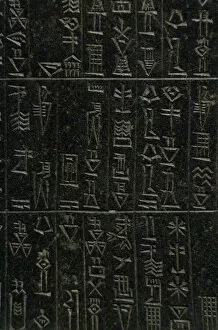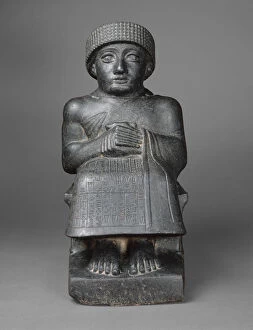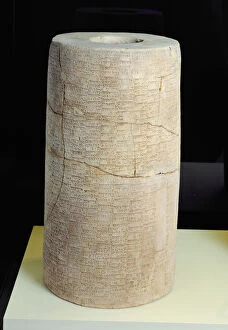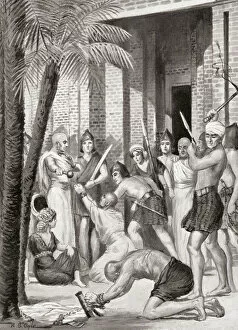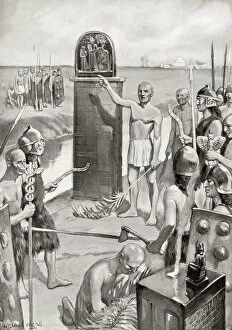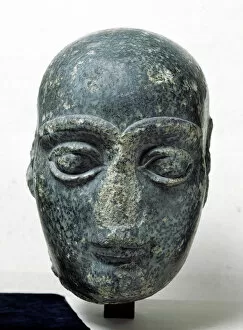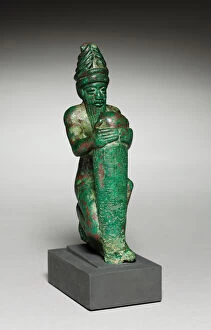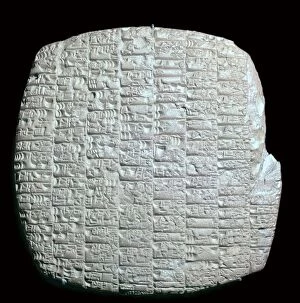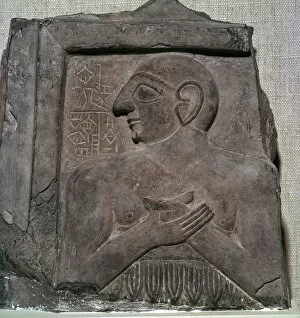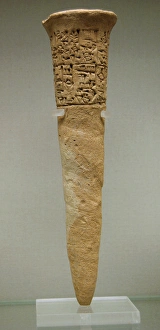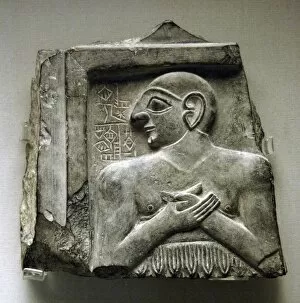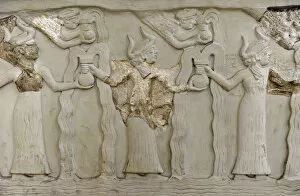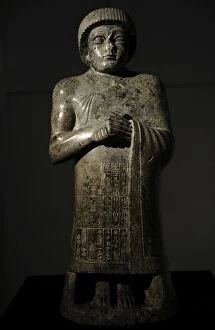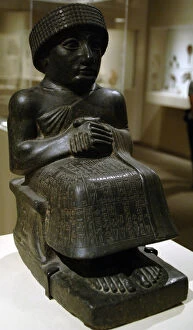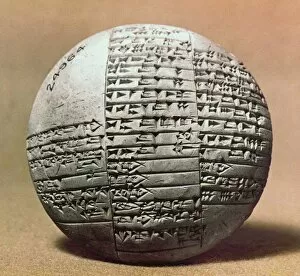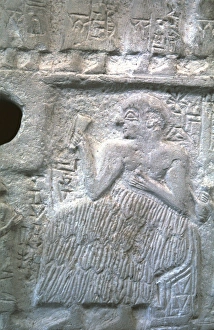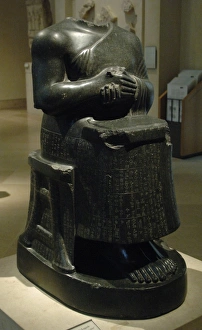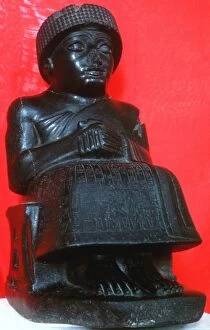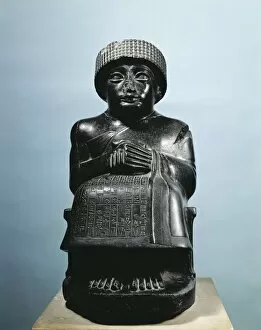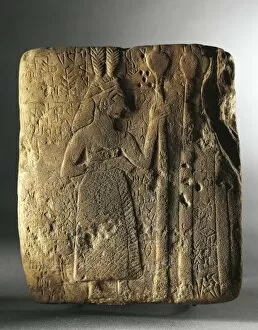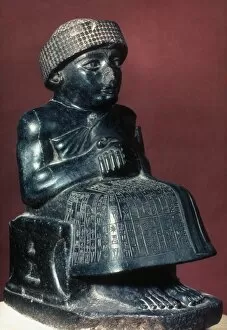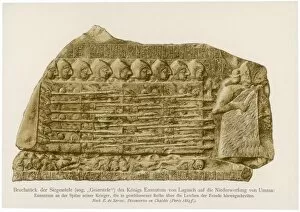Lagash Collection
"Lagash: Unraveling the Mysteries of an Ancient Neo-Sumerian City" Step back in time to 2120 BC, as we explore the captivating world of Lagash
All Professionally Made to Order for Quick Shipping
"Lagash: Unraveling the Mysteries of an Ancient Neo-Sumerian City" Step back in time to 2120 BC, as we explore the captivating world of Lagash, a prominent city-state nestled in Mesopotamia. Known for its rich history and cultural achievements, Lagash flourished during the Neo-Sumerian period. One of the most iconic symbols of the majestic Statue of Gudea, a ruler who reigned over this ancient city. Crafted with meticulous detail from diorite around 2090 BC, this masterpiece stands as a testament to Gudea's power and influence. Delve deeper into Lagash's past through cuneiform inscriptions found on various artifacts. The Cylinder B reveals a votive inscription documenting the construction of a temple dedicated to one of their gods. This sacred basin from Gudea's era (2144-2124 BC) further showcases their devotion to religious practices, not only renowned for its art but also for its political prowess. Eannatum, an influential Sumerian king, presided over funeral rites on battlefields—a testament to his authority and military might. Meanwhile, Urukagina implemented significant reforms that shaped the governance system within Lagash during his reign. The boundaries between neighboring cities were carefully demarcated by high priests like those from Nippur who delineated borders between Lagash and Umma—highlighting both diplomatic negotiations and territorial disputes that characterized ancient Mesopotamia. Gudea remains immortalized in clay foundation pegs discovered throughout Lagash—an enduring symbol representing stability and prosperity under his rule. Additionally, an intriguing copper alloy Foundation Nail attributed to Gudea himself provides insight into architectural practices prevalent at that time. As you wander through archaeological sites such as Telloh (Ancient Girsu), encounter mesmerizing relics like the head sculpture depicting "Gudea with a shaved head.

